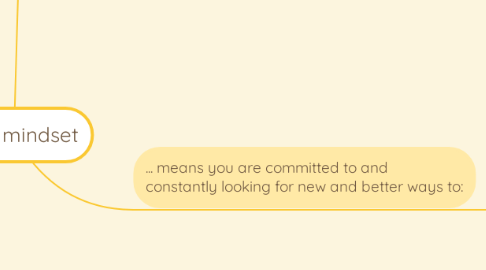
1. “Agile is an attitude, not a technique with boundaries." Alistair Cockburn
1.1. "... An attitude has no boundaries, so we wouldn’t ask ‘can I use agile here’, but rather ‘how would I act in the agile way here?’ or ‘how agile can we be, here?’”
2. ... means you are committed to and constantly looking for new and better ways to:
2.1. Discover and deliver value to customers faster
2.1.1. by:
2.1.1.1. Getting close to customers
2.1.1.1.1. by:
2.1.1.1.2. assumes that:
2.1.1.1.3. might be measured by:
2.1.1.2. Increasing the frequency of delivery, seeking feedback opportunities early and often
2.1.1.2.1. by:
2.1.1.3. Experimenting and learning rapidly
2.1.1.3.1. by:
2.2. Create and maintain an environment and culture that connects peoples capabilities, goals and ambitions to the strategy and success of the organisation
2.2.1. by:
2.2.1.1. Grow high-performing teams (according to Google's Aristotle Findings)
2.2.1.1.1. which is eased with:
2.2.1.2. Increasing trust and collaboration
2.2.1.2.1. which is eased by:
2.2.1.3. Promoting ongoing learning and development
2.2.1.3.1. which is possible with:
2.2.1.4. sustainable pace
2.2.1.5. focus
2.2.1.6. sustained direction
2.2.1.7. celebrate successes
2.2.1.8. Encourage play
2.3. Become a more effective & efficient execution engine
2.3.1. by:
2.3.1.1. Taking a big picture, economic and end-to-end (value stream) view and critique of delivery
2.3.1.1.1. by:
2.3.1.2. Taking time to reflect and think deeply about ways to get better
2.3.1.2.1. so as to:
2.3.1.2.2. assumes:
2.3.1.3. Teams delivering to commitments
2.3.1.3.1. accountability to deliver, which requires
2.3.1.4. resilience
2.3.1.5. collocation
2.3.1.6. fact-based decision making
2.3.1.7. Clear decision making paths
2.3.1.7.1. Authority where information, competence and clarity lie
